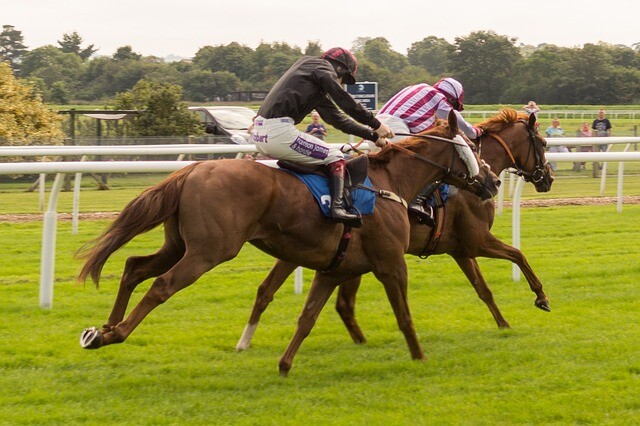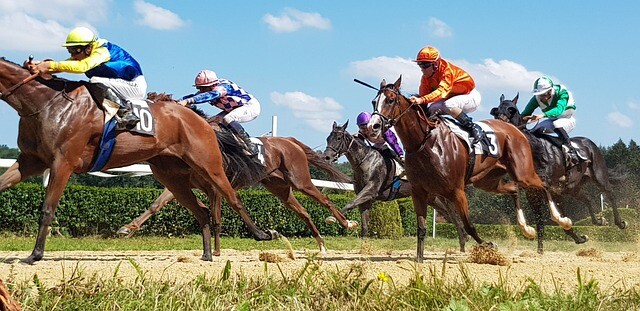Who is Terry Ramsden?
 Terry Ramsden is a person who gets varied comments relating to his past business and especially his love of horse racing and gambling. Some think he was a hero while others think he was a fool. I have a soft spot for the Essex man who made a fortune then lost it all.
Terry Ramsden is a person who gets varied comments relating to his past business and especially his love of horse racing and gambling. Some think he was a hero while others think he was a fool. I have a soft spot for the Essex man who made a fortune then lost it all.
Ramsden said: ‘I want to be the first billionaire in the UK!’
He was so close to achieving that goal.
If you went back to the 1980s, you couldn’t help but notice Ramsden. A diminutive man he may have been at just 5’ 4” tall with his mullet hairstyle which was common at the time. He played a mighty role within the horse racing world. He was a self-made Essex man of the Thatcherite era who talked the talk and walked the walk.
A self-promotion machine and a marketer’s dream.
He said: I’m a stockbroker from Enfield. I have long hair and I like a bet.’
Perhaps he liked to bet a little too much.
Ramsden made a fortune buying and selling bonds on the Japanese stock market and made good money gambling on the horses too. By 1984, he raised enough funds to purchase Edinburgh-based Glen International Financial Services Company. It was the start of big things and by 1987 he had a turnover of £3.5 billion and personal wealth of £150 million.
At one point he had a staggering 76 horses in training and his white and royal blue hooped racing silks were a familiar sight at racecourses across the country.
By Ramsden’s own admission, he liked a bet.
In fact, he would often be interviewed on TV about his eye-watering wagers.
In 1984, he paid £500,000 for top-class filly Katies who went on to win the Irish 1,000 Guineas and a hefty wager collecting £2.5 million after backing her at odds of 20/1.
He seemed to have the Midas touch and the winners kept flying home. In 1985, he purchased Mr. Snugfit who was earmarked for the 1986 Grand National and bet £50,000 each-way at 8/1. The horse was sent off clear favourite at odds of 13/2. The horse finished fourth but still returned winning of £150,000 (including stake).
Many years later, Ramsden said the bet was £500,000 each-way. ‘Anything else you hear is bullshit!’
However, the tide was about to term with the stock market crash on 19th October 1987.
In 1991, Ramsden was arrested while in Los Angeles by the Serious Fraud Office and sentence to 6-months imprisonment pending extradition back to the UK.
Ramsden’s financial might was crippled and it was the death knell for the Essex man made good. His company was hammered by losses and his wagering on the horses was splashed across the tabloids and news channels. He was declared bankrupt in 1992 with debts of £100M. He was said to owe Ladbrokes £2M and ‘warned off’ all racecourses.
To make matters worse, he was later imprisoned for failing disclose assets of £300,000.
Ramsden always stated that his business was being a stockbroker and gambling was just for fun.
He always maintained that he could have turned things round but wasn’t given the opportunity to get on with business.
It is reputed that at one time Ramsden owned 30% of Chelsea Football Club. In May 2022, the club was sold or £4.25 billion.
If only Ramsden’s fortunes had been more stable he could well have become a billionaire.
A great character who made a fortune with hard work and intelligence. His downfall wasn’t his gambling but the stock market crash. It raises a smile when he is criticised by many gamblers.
We could say to them: ‘How many of you have founded a business with a turnover in billions?’
I didn’t think so!
 The foundation stallions, or foundation sires, of the Thoroughbred breed are those to whom all, or nearly all, modern Thoroughbreds can trace their paternal bloodline. Although by no means the only stallions to be imported into England in the late seventeenth and early eighteenth centuries – according to the General Stud Book, first published in 1793, there were over 200 – the names that have gone down in history are the Byerley Turk, Darley Arabian, and Godolphin Arabian.
The foundation stallions, or foundation sires, of the Thoroughbred breed are those to whom all, or nearly all, modern Thoroughbreds can trace their paternal bloodline. Although by no means the only stallions to be imported into England in the late seventeenth and early eighteenth centuries – according to the General Stud Book, first published in 1793, there were over 200 – the names that have gone down in history are the Byerley Turk, Darley Arabian, and Godolphin Arabian. Horse racing in Australia is more than a series sporting events; it is a deeply ingrained cultural phenomenon that has consistently enamoured the nation for over a century. The popularity of horse racing can be attributed to a fascinating mix of historical significance, economic impact, social engagement, and community involvement.
Horse racing in Australia is more than a series sporting events; it is a deeply ingrained cultural phenomenon that has consistently enamoured the nation for over a century. The popularity of horse racing can be attributed to a fascinating mix of historical significance, economic impact, social engagement, and community involvement. Established on Cantley Common, Doncaster in 1776 and moved to its current location, on nearby Town Moor, in 1778, the St. Leger Stakes is the oldest of the five British Classics. Run annually over a distance of 1 mile, 6 furlongs and 115 yards in September, it is also the longest and the latest on the Flat racing calendar. While not an out-and-out test of stamina, the St. Leger Stakes may push three-year-old colts and fillies, many of whom will not have raced beyond a mile and a half, close to, or beyond, their limit of endurance.
Established on Cantley Common, Doncaster in 1776 and moved to its current location, on nearby Town Moor, in 1778, the St. Leger Stakes is the oldest of the five British Classics. Run annually over a distance of 1 mile, 6 furlongs and 115 yards in September, it is also the longest and the latest on the Flat racing calendar. While not an out-and-out test of stamina, the St. Leger Stakes may push three-year-old colts and fillies, many of whom will not have raced beyond a mile and a half, close to, or beyond, their limit of endurance.